I guess the paintings of standards were done when the type was a little different to the type now accepted. Also type is different depending on where you are, show winners here in Ireland wouldn't cut the mustard in the States and quite probably vice versa also. I have amassed quite a few books on poultry recently and pictures and descriptions of standards do differ. My lovely new cockerel (see a few pages back) will win plenty here but his tail would probably do him no favours in the States!
Navigation
Install the app
How to install the app on iOS
Follow along with the video below to see how to install our site as a web app on your home screen.
Note: This feature may not be available in some browsers.
More options
You are using an out of date browser. It may not display this or other websites correctly.
You should upgrade or use an alternative browser.
You should upgrade or use an alternative browser.
Brahma Thread
- Thread starter vortec
- Start date
- Status
- Not open for further replies.
Quote:
I believe the big reason is because the standard actually called more for it. The male has a higher angled tail, has a more prolific tail, and there was little to no mention of the male having a level back sweeping evenly up to the tail. In fact the word concave was used enough to have an artist depict a U shape.
Here's my favorite and in my opinion a most ideal Brahma hen illustration. Illustration is circa 1905 I believe. The body is really nice, and the face - One cannot call it a Brahma unless it has a face like that!

I believe the big reason is because the standard actually called more for it. The male has a higher angled tail, has a more prolific tail, and there was little to no mention of the male having a level back sweeping evenly up to the tail. In fact the word concave was used enough to have an artist depict a U shape.
Here's my favorite and in my opinion a most ideal Brahma hen illustration. Illustration is circa 1905 I believe. The body is really nice, and the face - One cannot call it a Brahma unless it has a face like that!

Quote:
Now your talking. I had some pretty good ones I had seen over the years, that I thought I had put back for safe keeping. Apparently not so safe, should have made hard copies.
I highly recommend placing a copy of these type of shots somewhere in, or near, your coop, to remind us on a daily basis of what a proper example of the breed looks like, and as a blue print of sorts, of what we are striving for in our breeding pens.
Now your talking. I had some pretty good ones I had seen over the years, that I thought I had put back for safe keeping. Apparently not so safe, should have made hard copies.
I highly recommend placing a copy of these type of shots somewhere in, or near, your coop, to remind us on a daily basis of what a proper example of the breed looks like, and as a blue print of sorts, of what we are striving for in our breeding pens.
Last edited:
For me the love of the breed overcomes the need for perfect type - I want to enjoy my birds not stand there over the brooder wringing necks because they are feathering wrongly or showing the wrong shape. I am not suggesting anyone here does that, but for me my Brahmas are a pure joy, not clinically created. Please don't get me wrong here, I know we all love our birds, but sometimes it seems that we all worry far too much about a few mm too much on back length, or feathers on hocks, or other little things. I know some of us to breed for showing and I know how competitive it is, just don't lose sight of the amazing docile friendly birds we first saw when we bought our first ever Brahma....
(And my new rooster decided to try and make himself the boss of me this morning, poor deluded birdy, I had to chase him all over the garden before he gave up on that one)
(And my new rooster decided to try and make himself the boss of me this morning, poor deluded birdy, I had to chase him all over the garden before he gave up on that one)
I understand your point, Sarah, however in the US there are so many hatchery-bred Brahmas so far from the Brahma type it is just sad. So, we naturally have need to breed for the original Brahma type. True Brahmas aren't very common out here. I myself don't have any "real" ones yet but fully understand the disappointment of hatchery ones. My girls do not exceed 6 lbs, do not have a broad head or a nice defined brow, and do not even look like sturdy birds at all. Pick them up, and they're just a bag of fluff and bones.
I just read this whole thing because I havent been around for a bit. One of the joys of working at a pet store that sells chickens is that I get to see all sorts of mixes. Over the last year Ive had a customer bring in his mutts to sell and they are awesome. His name is Vasiliy and he started out with a pair of dark, light, and buff brahmas with some easter egger hens, a barred rock hen, and a couple cornish mutts about 10 years ago and has kept a closed flock since. He hatches tons of eggs from them and always keeps the best pullets and breeds back to his roosters which look like random colored brahmas. A couple months back he brought in a pen of roosters that he loved but couldnt keep because he didnt have enough room. To summarize what they looked like is similar to blue partridge brahmas but one had a huge beard from the EE hens influence and one had faint barring in the hackle and saddle. When he told me his story it reminded me of some BYC members such as big medicine and dan powell. I just thought Id share this with yall since it is basically a brahma breeding project since he keeps only the biggest brahma looking birds with the best coloring. I think I may have a pic somewhere of a few of the cockerels on my facebook but not sure, if I do I will post a link here.
I never realised it was like that over in the US! I see all these pics of fabulous birds posted here (and elsewhere) and they really are beautiful birds. The Brahmas came here from the UK, and they got there from the US (after leaving China), I knwo the way we got them. Ours are big and heavy and not always cochin-like fluffy, with a small body and profuse false mass feathering. My rooster (18 months old?) can barely be lifted yet my hens are still small, they are not even a year old yet though.
I do see the difference with the hatchery chicks and the pure breds, we don't have hatcheries like that here, the only mass hatcheries in Ireland cater for the commercial industry, meat chickens, egg producing chickens or turkeys for Easter/Christmas. So, if you buy a Brahma here you are getting either a bad one (with a cross in it some way back through it's ancestry) or a good one which has been pure bred for ever and ever.
Never the less, poultry keeping here has been a way of life for many many generations, with only my parent's generation not really keeping hens/ducks etc., and it is now going through a huge revival in Ireland. So many people are selling tiny urban arks and coop/run assemblies, it's hard to see how well the breeds will cop with lots of people getting hooked but not reading up on what they are doing. It's very fashionable here for Pekin bantams at the moment, and Orpingtons, and Seramas are getting to be the next big thing, they are very very hard to get hold of and Serama breeders are very careful about who they talk to/sell to.
As for Brahmas, they wouldn't be a common bird here as back yard flocks go, but I love them none the less. Feathered feet put a lot of people off here! (My father included, he says they are Satan's birds) I will continue to keep and love my birds, refreshing genes and trying out different things when breeding them. I get a massive sense of achievement from setting an egg in my incubator and then seeing someone buy that 6/8 week old chick, beaming from ear to ear, and I know they'll be loved too wherever they go. I am very picky who I sell to.
I do see the difference with the hatchery chicks and the pure breds, we don't have hatcheries like that here, the only mass hatcheries in Ireland cater for the commercial industry, meat chickens, egg producing chickens or turkeys for Easter/Christmas. So, if you buy a Brahma here you are getting either a bad one (with a cross in it some way back through it's ancestry) or a good one which has been pure bred for ever and ever.
Never the less, poultry keeping here has been a way of life for many many generations, with only my parent's generation not really keeping hens/ducks etc., and it is now going through a huge revival in Ireland. So many people are selling tiny urban arks and coop/run assemblies, it's hard to see how well the breeds will cop with lots of people getting hooked but not reading up on what they are doing. It's very fashionable here for Pekin bantams at the moment, and Orpingtons, and Seramas are getting to be the next big thing, they are very very hard to get hold of and Serama breeders are very careful about who they talk to/sell to.
As for Brahmas, they wouldn't be a common bird here as back yard flocks go, but I love them none the less. Feathered feet put a lot of people off here! (My father included, he says they are Satan's birds) I will continue to keep and love my birds, refreshing genes and trying out different things when breeding them. I get a massive sense of achievement from setting an egg in my incubator and then seeing someone buy that 6/8 week old chick, beaming from ear to ear, and I know they'll be loved too wherever they go. I am very picky who I sell to.
Hi! I JUST got back from TSC with 6 baby light Brahmas! They are soo cute! I will get some pics up! Right now they are getting used to their new brooder.


Hi Everyone,
I 'm an ex-pat from New Zealand, living in Thailand for the last 6 years. I'm brand new with raising chickens and just yesterday I purchased 3 adorable Brahma chicks.
I know absolutely nothing at all about chickens and how to look after them so I would really appreciate any help you can give me.

First of all, it'd be super helpful if you could help me determine if my new babies are girls or boys? I have a feeling I may have one cockerel and two pullets?? I have been told they are 3 weeks old.
Chick No. 1




Chick No. 2




Chick No. 3





How soon can I put them outside in a chicken coop? At the moment they are living in a temporary home, an extra large dog crate. I have an idea about building a chicken coop and I'd like to post photos of my idea here soon. I will need help knowing if my idea will work or not. At the moment my biggest problem is keeping these chicks cool enough. I often see them panting. Today is a hot day and I've got them outside in their dog crate with a fan blowing near them (not directly on them). We are heading into the hot season here and there won't be rain now for a number of months.
Anyway, thanks and I look forward to your wisdom.

I 'm an ex-pat from New Zealand, living in Thailand for the last 6 years. I'm brand new with raising chickens and just yesterday I purchased 3 adorable Brahma chicks.
I know absolutely nothing at all about chickens and how to look after them so I would really appreciate any help you can give me.

First of all, it'd be super helpful if you could help me determine if my new babies are girls or boys? I have a feeling I may have one cockerel and two pullets?? I have been told they are 3 weeks old.
Chick No. 1
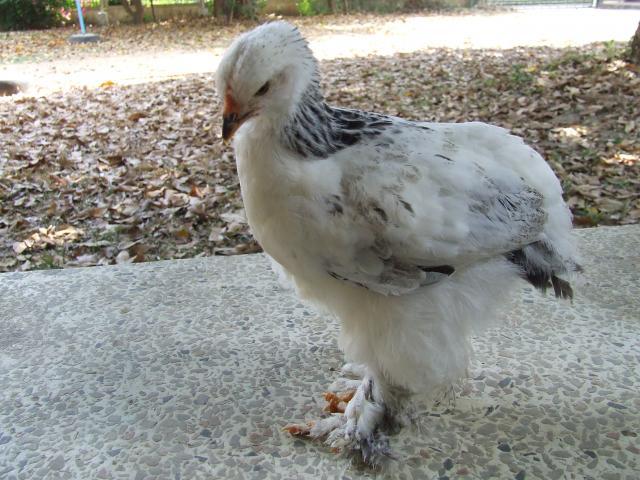
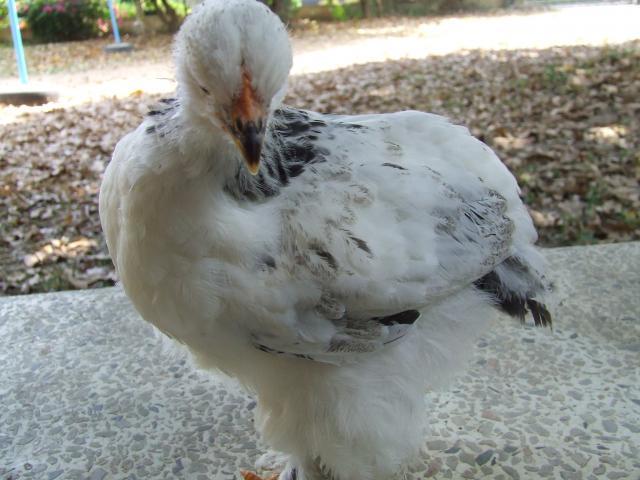
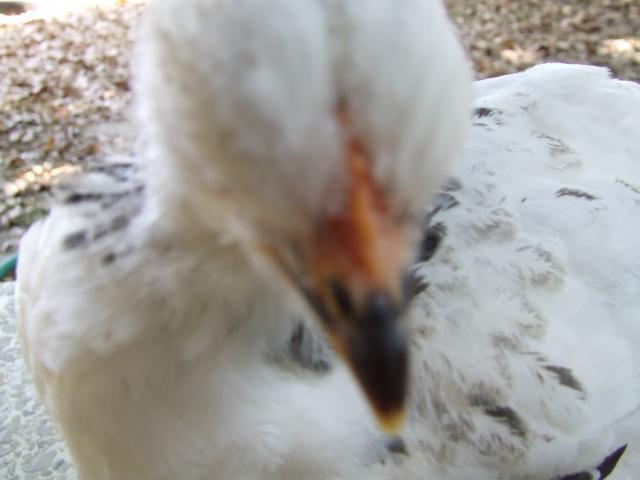
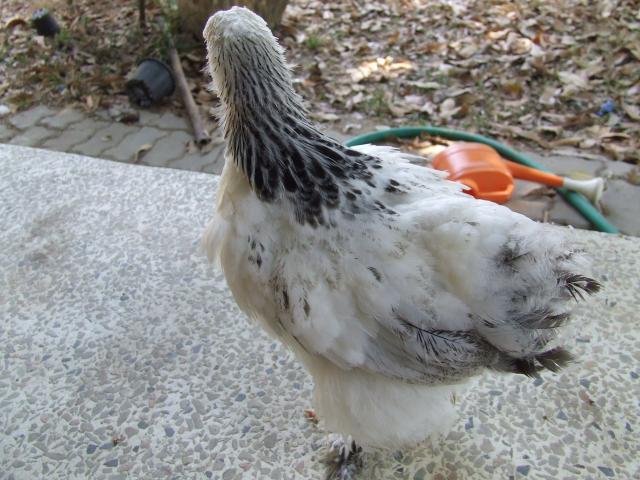
Chick No. 2
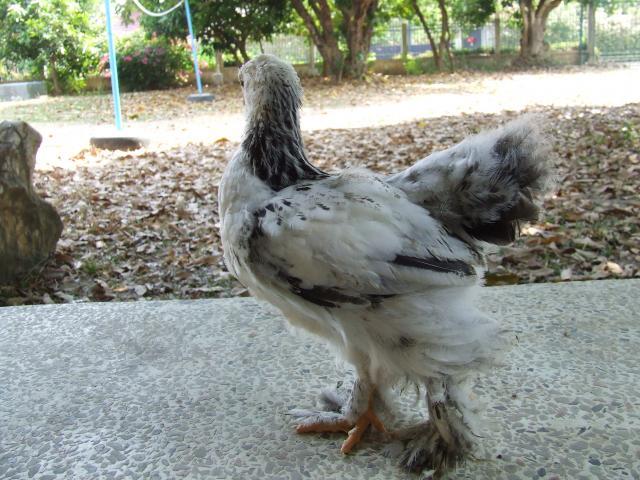
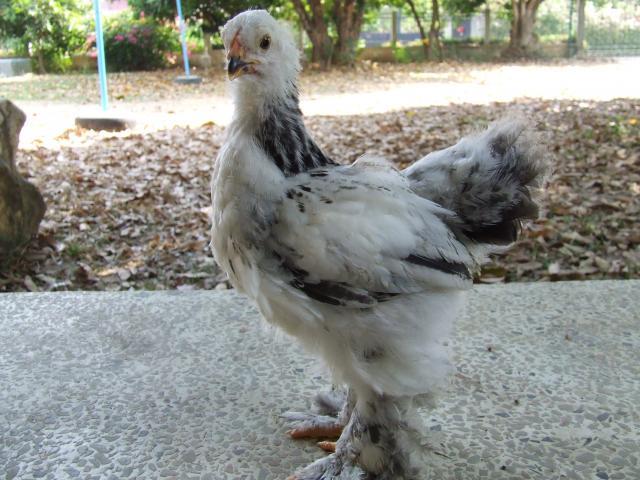
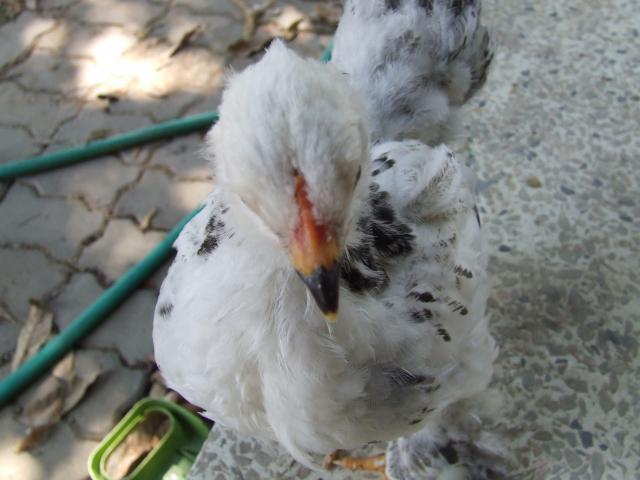
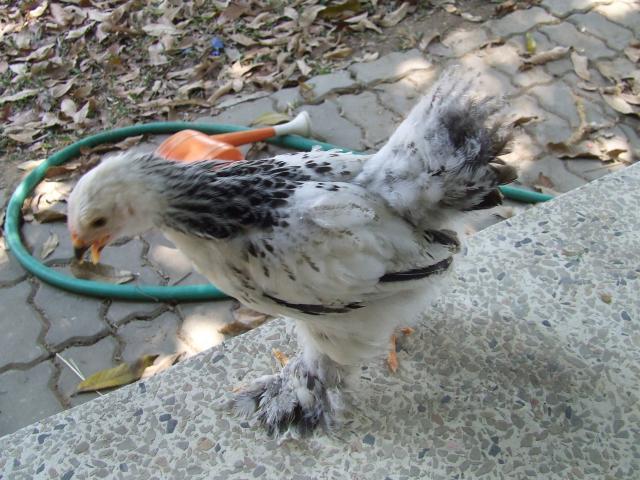
Chick No. 3
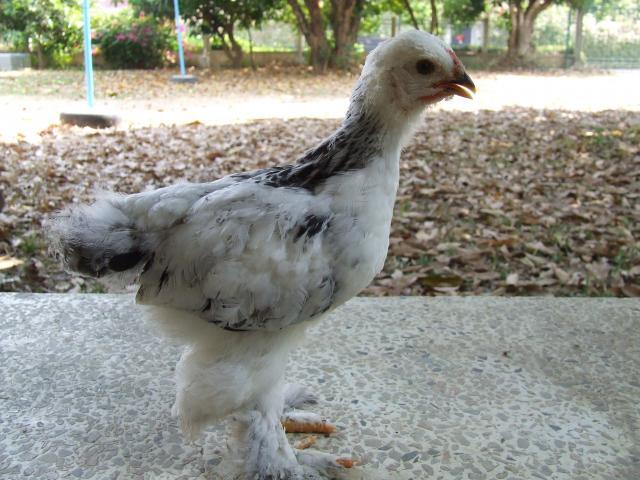
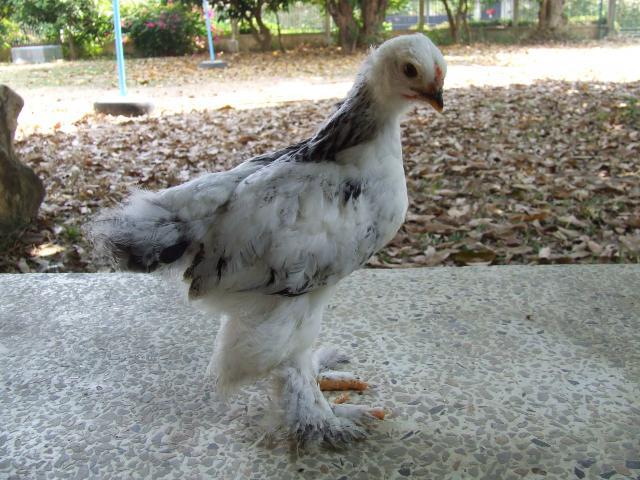
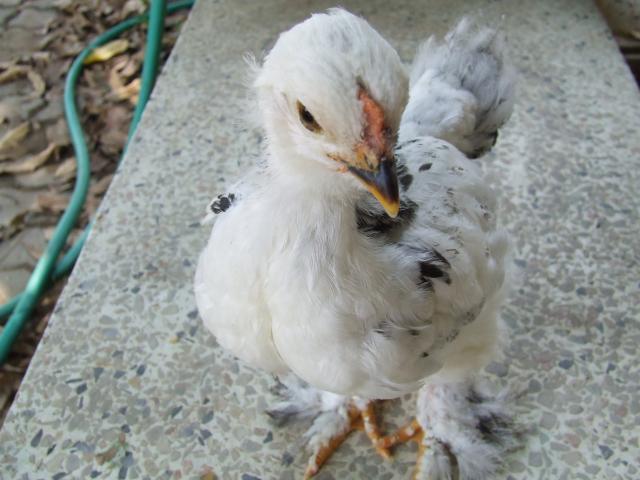
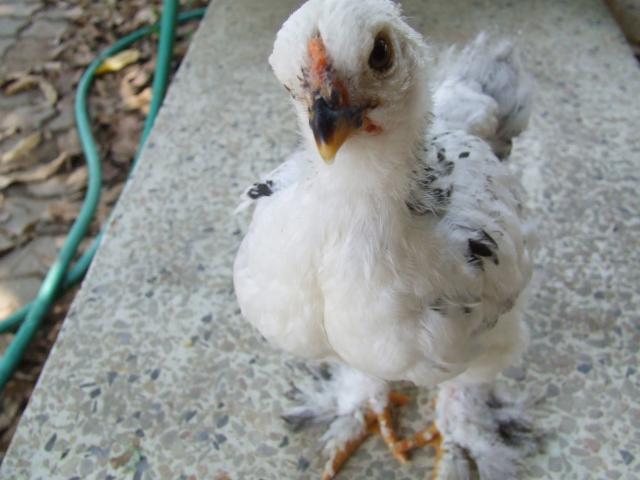
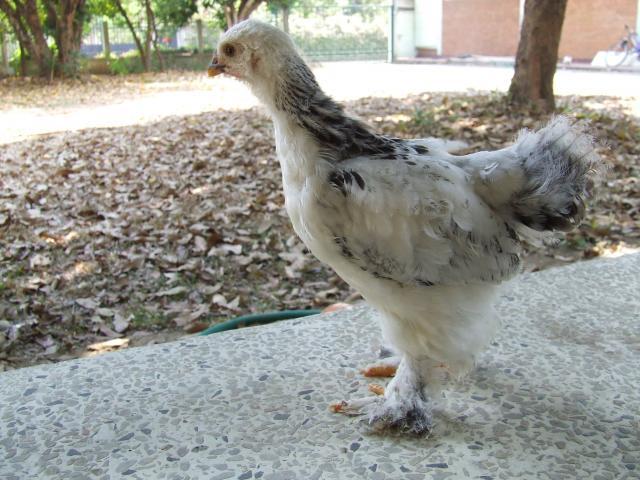
How soon can I put them outside in a chicken coop? At the moment they are living in a temporary home, an extra large dog crate. I have an idea about building a chicken coop and I'd like to post photos of my idea here soon. I will need help knowing if my idea will work or not. At the moment my biggest problem is keeping these chicks cool enough. I often see them panting. Today is a hot day and I've got them outside in their dog crate with a fan blowing near them (not directly on them). We are heading into the hot season here and there won't be rain now for a number of months.
Anyway, thanks and I look forward to your wisdom.

Please I hope I am wrong, but chick 1 is a girl, chick 2 def a boy and chick 3 I think is a boy too.
Good coop for brahmas has a low roost (no more than 6 inches from the floor) and nesting boxes always lower than the roost and preferably situated away from any point they can poo to from the roost. And big, make allowances for these guy to grow very large. You want at least 1 foot of roost space per bird.
PS - lovely birds though!
Good coop for brahmas has a low roost (no more than 6 inches from the floor) and nesting boxes always lower than the roost and preferably situated away from any point they can poo to from the roost. And big, make allowances for these guy to grow very large. You want at least 1 foot of roost space per bird.
PS - lovely birds though!
Last edited:
- Status
- Not open for further replies.
New posts New threads Active threads
-
Latest threads
-
-
-
Major behavior issues within flock (lots of fighting)
- Started by Lyris
- Replies: 6
-
-
-
-
Threads with more replies in the last 15 days
-
-
-
Is frostbite avoidable without electric heating? Should I add heat to my coop?
- Started by ChickenShepherd_6116
- Replies: 154
-
-
-
×

